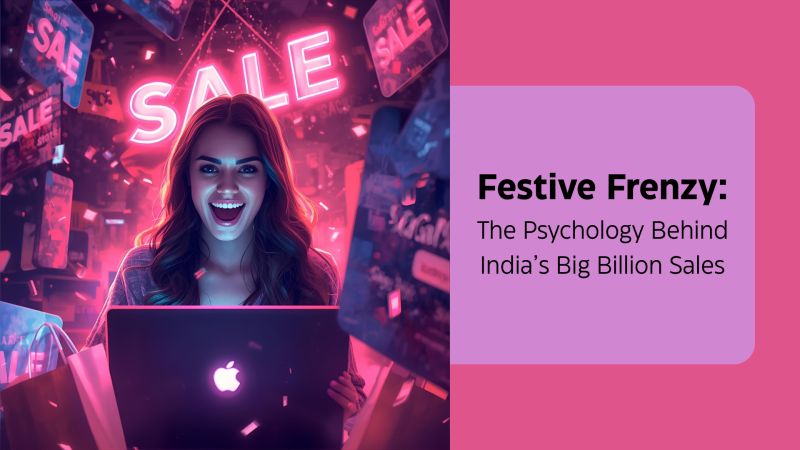
Every Diwali, India doesn’t just light lamps – it lights up shopping carts. Flipkart’s Big Billion Sale, Amazon’s Great Indian Festival, Myntra’s style carnivals… they aren’t just sales. They’re spectacles of psychology, pulling millions into the checkout zone.
Here’s how the magic works:
1.Festival as Social License
Diwali is gifting season. Buying is no longer indulgence – it’s duty. “I’m not splurging; I’m celebrating.” Psychologists call this moral licensing: we justify excess by cloaking it in virtue. Brands lean in by promoting “family upgrades” and “gifting bonanzas.”
2.Scarcity & Urgency
Scarcity makes things sweeter. “Only 2 left.” “Offer ends at midnight.”
We don’t want to miss out – that’s FOMO.
Cialdini called it the “scarcity principle.”
3.Anchoring & Decoy Pricing
Show a ?70,000 iPhone first, then slash to ?49,999.
That anchor frames the new price as a bargain.
Add a mid-tier decoy model, and the higher-priced one suddenly feels “worth it.”
4.Bundling & the Sunk Cost Trap
“Buy 2, get 1 free.” Bundles shift focus from need to optimisation.
Add prepaid wallet top-ups or “free shipping above ?999,” and the sunk cost fallacy ensures carts only grow fatter.
5.Gamification & Dopamine Loops
Flash sales every hour. Spin-the-wheel rewards. Lightning deals.
These aren’t gimmicks – they’re variable rewards, the same principle that makes casinos addictive.
Each click is a dopamine shot. The purchase is almost secondary.
6.Social Proof in Hyperdrive
“10,000 bought this today.” “Bestseller of the hour.”
In a collectivist society like India, herd signals amplify.
If everyone else is buying, it must be good.
Reviews, influencer reels, and “bestseller” tags are modern-day word-of-mouth on steroids.
7.The Identity Play
Festive shopping isn’t just transactional, it’s aspirational.
Consumers use products as signals of identity – “I upgraded my phone, I upgraded my status.”
These campaigns tap self-congruence theory: we buy not what we need, but who we want to be seen as.
The Double-Edged Sword
For brands, these campaigns are traffic tsunamis.
They bring visibility, volumes, and new users.
But they also teach customers to wait for discounts, eroding loyalty and margins.
When every brand screams “70% off,” differentiation drowns in noise.
Final Spark
Festive sales prove one truth:
Consumers don’t buy products, they buy psychology.
The brands that win Diwali aren’t those offering the biggest bargains – they’re the ones turning buying into belonging, urgency into utility, and offers into obsession.
As the lights fade and carts empty, remember:
Discounts create transactions. Brands create traditions.
